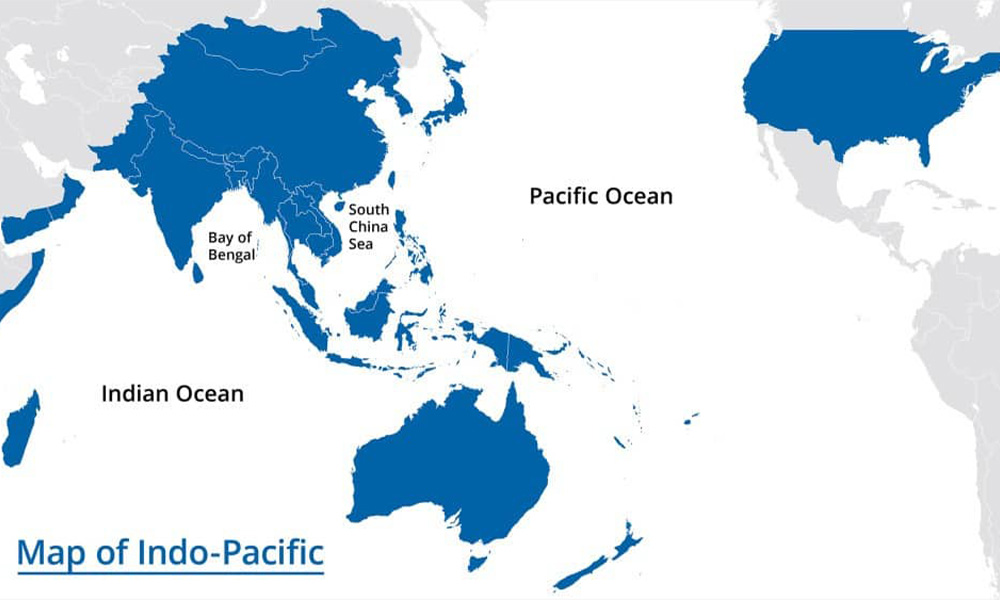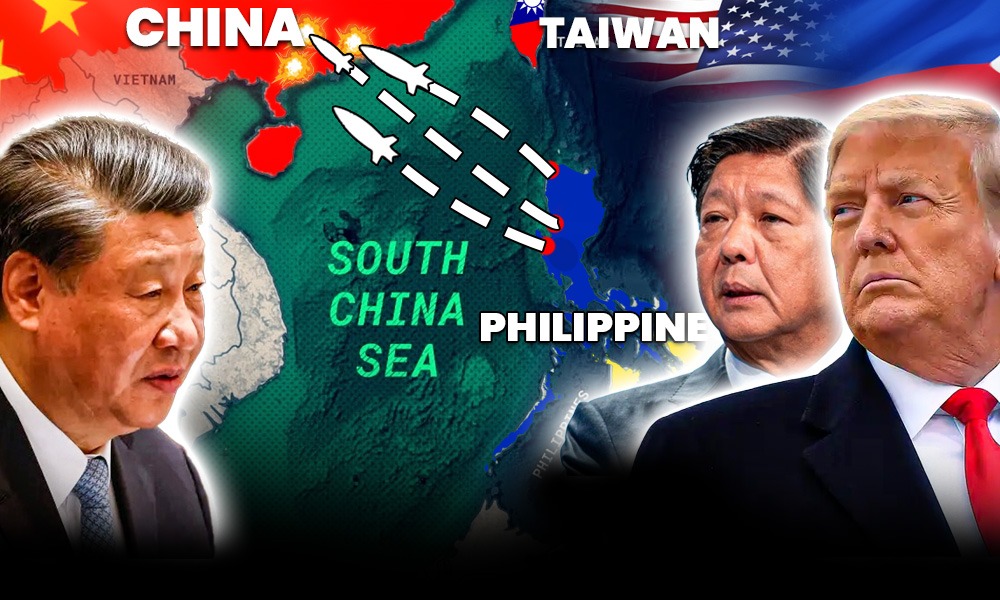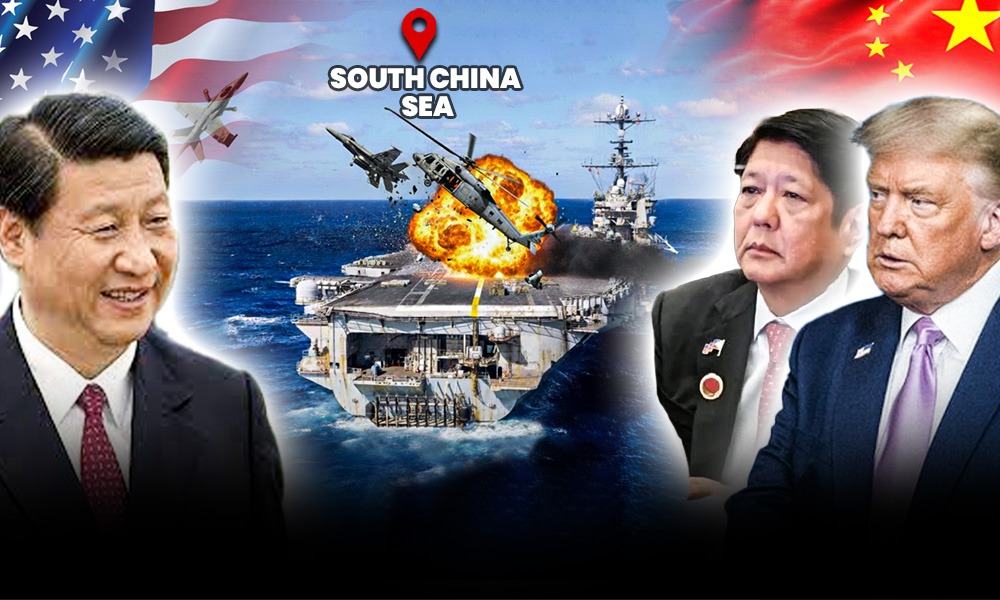Australia, a vast continent situated to the south of Southeast Asia, serves as both a prominent player in the Indo-Pacific region and a bridge to the wider world. Known for its rich history, unique biodiversity, and economic might, Australia’s relevance to Southeast Asia is paramount.
Geographically, Australia is a nexus between the Indian and Pacific Oceans, positioning it as a key maritime link. Historically, while not part of the ancient Maritime Silk Road, its waters have always been important for trade, exploration, and cultural exchange. Its close proximity to Southeast Asia means that it’s ideally situated to facilitate trade and commerce in one of the world’s most dynamic and populous regions.
The waters surrounding Australia, particularly to the north, serve as crucial trade routes, comparable to the South China Sea in their strategic significance. A significant volume of international trade passes through these routes, linking economies from Asia, the Middle East, and beyond. The Timor Sea, lying to the north of Australia, holds substantial oil and gas reserves, playing a pivotal role in the energy security of the region.
But it’s not just about commerce and natural resources. The geopolitical dynamics involving Australia and Southeast Asia are thick with strategic calculations. Australia, being a close ally of the United States, often finds itself balancing its relationships between its western allies and its neighbors to the north.
Moreover, Australia’s formidable military capabilities, coupled with its expansive maritime domain, establish it as a prominent figure within the security framework of the region. In the backdrop of escalating tensions in areas such as the South China Sea, Australia’s role as a diplomatic intermediary and a strategic ally assumes heightened significance. Australia’s historical and cultural affinities with Southeast Asia run profound and enduring. From shared colonial histories to the Aboriginal trade networks that predate European arrival, the connections are profound and enduring. Today, as Southeast Asia surges forward, Australia’s collaboration in areas of education, tourism, diplomacy, and defense cooperation remains critical.
Let us delve deep in this realm to understand more about Australia’s intricate relationship with it northern neighbors.
Australia and Southeast Asia: A Historical Tapestry
Throughout the annals of history, intertwined destinies frequently emerge, and the relationship between Australia and Southeast Asia stands as a testament to such a connection. Spanning centuries, this rich history reveals an intricate web of trust, shared values, and cooperation.
Starting from unique flora and fauna, Australia has profoundly influenced Southeast Asia’s biodiversity. Beyond simple migration, the species from Australia have woven themselves into the Southeast Asian ecological tapestry. The amalgamation can be ascribed to Australia’s geographical proximity to the Southeast Asian archipelago, a nearness that has fostered a dynamic interplay between these two zones. The tales of migration encompass more than just the movement of species. They also tell the stories of indigenous peoples from the Australian continent venturing to parts of Southeast Asia. This migration wasn’t just about exploration; it depicted the shared history of adaptation. Both regions’ cultures reflect a joint experience of migration and the challenges and joys that come with it. For instance, both cultures have rich oral histories and traditions that speak of journeying to new lands, facing adversities, and establishing roots.
Indigenous Australian tales, often echoing themes of nature, spirits, and survival, have found resonance in Southeast Asian cultures. In turn, Southeast Asia has not only adopted these stories but added their unique interpretations, merging both regions’ values and experiences.
Records reveal exchanges of Australian minerals and woods for Southeast Asia’s sought-after spices, textiles, and crafts. Such barter might be the precursor to the robust trade relationships evident today. For instance, in the modern era, they collaborate on areas such as technology, security, and climate change initiatives, leveraging their shared history to foster mutual growth.
Architecturally too, traces of shared history are evident. Some ancient structures in Southeast Asia, especially those in regions proximate to Australia, appear influenced by Australian indigenous designs. Oceanic bonds provide another dimension to this shared history. Even before the rise of current maritime discussions, seafarers from both regions navigated the expansive oceans, forging a connection between the lands.
These anecdotes are the bedrock on which current relationships, including diplomatic ties and cultural exchanges, are founded.
Australia’s Modern Diplomatic and Economic Role in Southeast Asia
In modern geopolitics, where past connections meet present-day aspirations, the bond, grounded in mutual history of Australia and South East Asia, is now blossoming under the umbrella of contemporary strategic and economic endeavors.
From the waning years of the 20th century, Australia began reshaping its outlook towards Asia, acknowledging the increasing significance of Southeast Asia in the global scenario. Scholars like Hugh White have accentuated “how the ‘Engage Asia’ strategy of the 21st century not only marks Australia’s keenness to cement its position in the region, but also showcases its commitment to fostering deep-rooted political, security, and economic ties with Southeast Asian nations.”
For instance, its relationship with Indonesia isn’t just grounded in strategic interests but also thrives on the rich heritage of people-to-people interactions. On the other hand, the recurrent dialogues with Singapore signals its pivotal role in bridging Australia’s economic aspirations with the region. The bond with Malaysia, anchored in defense collaborations, educational exchanges, and trade pacts, mirrors the ethos of mutual trust and reverence.
On the economic front, the ties between Australia and Southeast Asia is witnessing exponential growth. Data from the Department of Foreign Affairs and Trade indicates a burgeoning trade dynamic. Sectors like mining and education see a pronounced Australian footprint in Southeast Asia, the region reciprocates with significant investments in Australia, particularly in infrastructure and technological spheres.
One such partnership is the Australia-Indonesia Partnership for Economic Development, which emphasizes bolstering economic collaborations. Meanwhile, initiatives like the New Colombo Plan underline the importance of cultural and educational exchanges by supporting the movement of Australian students within the region.
However, it’s important to recognize that while their shared goals form the essence of this partnership, challenges persist. The rising influence of China presents both opportunities and challenges. While China’s economic growth has opened avenues for collaboration, its strategic ambitions have raised concerns, compelling Australia and Southeast Asia to tread cautiously. Additionally, the omnipresent threat of terrorism necessitates a coordinated response to ensure regional stability.
Geopolitical Implications of Burgeoning Relationship
The relationship between Australia and Southeast Asia, delves deeply into the realm of geopolitics and defense. This connection, both profound and pivotal, comes to the fore in the rapidly changing global landscape.
Australia’s interests in the South China Sea, although indirect, are unmistakably strategic. As a key stakeholder in the Indo-Pacific region, Australia ardently supports freedom of navigation and staunchly stands by the tenets of the United Nations Convention on the Law of the Sea (UNCLOS). A sentiment echoed by a former Australian Foreign Minister when he remarked, “Australia’s stance is clear; we advocate for right of passage and unencumbered commerce, grounded in established principles of international law.” This commitment to navigation rights has seen Australia work diligently with ASEAN countries in an attempt to develop a unified code of conduct for the South China Sea.
Yet, the broader chess game of geopolitics also demands a nuanced approach to power dynamics. In fostering ties with ASEAN countries, Australia finds itself navigating the intricate waters of the Indo-Pacific, especially with China asserting its influence. However, as a geopolitical analyst rightly observed, “Australia’s engagement in Southeast Asia isn’t solely a response to China’s presence but a testament to Australia’s proactive role in shaping the security equilibrium of the region.”
Still, amidst this geopolitical alignment, challenges are aplenty. The specter of extremism looms large, requiring a coordinated approach between Australia and Southeast Asia. Natural disasters, given the region’s vulnerability to climate change, present another shared challenge, necessitating collaborative disaster response mechanisms.
Australia’s bond with Southeast Asia is a melange of historical ties, mutual trust, and strategic foresight. It encapsulates Australia’s aspiration to be more than just an observer but an active shaper of the region’s destiny.
Defence and Strategic Synergies
Miyamoto Musashi, a revered Japanese strategist, once implied that “effective strategy involves simultaneously understanding the immediate and the distant.” Following this wisdom, Australia’s evolving defence relationship with Southeast Asia intertwines its historical roots with its pressing geopolitical concerns. It’s a dance of diplomacy, balancing the immediacies of regional stability with the long-term goals of maritime security. Australia’s foray into maritime diplomacy with Southeast Asia is evident through its naval exercises. These facets extend beyond sheer military prowess, encompassing a steadfast dedication to the unfettered freedom of navigation within the South China Sea. The commitment is resolute, assuring that every nation can traverse these waters without encountering impediments of a political or military nature. Additionally, Australia’s proactive participation in the trilateral Malabar exercises, conducted in collaboration with the United States and Japan, serves as a testament to its unwavering commitment to fostering maritime openness and cooperation throughout the expansive Indo-Pacific region. Furthermore, one can point to the annual AUSINDEX naval exercises between Australia and regional partners as a testament to the burgeoning defense ties. The bilateral KAKADU exercises with ASEAN members further exemplify this deepening camaraderie. A sentiment aptly captured by a former Chief of the Australian Navy when he said, “These exercises are not merely military routines but pillars of strategic trust.”
Geography at Play
Australia’s Northern Territory, especially Darwin, is more than just scenic beauty; it’s a strategic fulcrum. This region provides Australia with unparalleled proximity to Southeast Asia and the broader Indo-Pacific. It’s a pivotal base for maritime surveillance, fostering stronger regional cooperation and collective security. The South China Sea’s trade corridors are vital to Australia, with a considerable portion of its trade flowing through these channels. Australia’s push for navigational freedom upholds international maritime law and ensures its trade lifelines remain unclogged.
Navigating the dynamics with Southeast Asia, Australia faces both immense opportunities and daunting challenges. Central to this navigation is the China factor. As China looms large in the Indo-Pacific, Australia’s engagements in Southeast Asia are a strategic play, balancing economic ties with China and ensuring regional stability. The economic front offers avenues of growth. The ASEAN-Australia-New Zealand Free Trade Agreement (AANZFTA) stands as a beacon of these possibilities, ripe for exploration in tech, education, and service sectors. However, geopolitical hurdles persist.
While Australia’s stance on freedom of navigation is clear, it strives to advocate for its principles without plunging deep into the territorial disputes. Emerging challenges, such as the rise of extremism and looming natural disasters exacerbated by climate change, require a united front.
Horizon of Possibilities
Often attributed to Abraham Lincoln, the quote “The best way to predict the future is to create it” aptly defines Australia’s current engagement with Southeast Asia. As global geopolitics usher in a new era, Australia finds itself at a crucial crossroads with Southeast Asia.
Experts, such as Dr. John Blaxland, emphasize that “Australia’s intensified involvement in Southeast Asia is a calculated strategic choice, fueled by mutual interests and shared economic trajectories.” However, Dr. Evelyn Goh is of the opinion that “while history has laid a strong foundation, the true course of the Australia-Southeast Asia relationship will be determined by emerging economic, environmental, and geopolitical shifts.”
The age of digital transformation offers new arenas of cooperation. Whether it’s through tech partnerships, fortifying joint cybersecurity measures, or enhancing digital infrastructure, both regions have much to gain. At the same time, there’s an imperative for joint actions against global challenges like climate change, ensuring sustainable practices, and enhancing disaster readiness. Cultural exchanges and academic collaborations further offer avenues for deeper mutual understanding.
While Australia’s journey with Southeast Asia hints at a future rife with reinforced alliances and shared prosperity, the path will invariably present hurdles. The resilience of this relationship will be tested not just by how challenges are faced, but by the collaborative spirit with which solutions are crafted.
The End Note
Navigating global waters requires more than just setting a course; it demands an in-depth understanding and mutual respect, as echoed by various diplomatic adages. Diplomacy transcends the mere pursuit of national interests—it symbolizes the grace, honesty, and reverence characterizing interactions between nations. Australia’s relationship with Southeast Asia is a testament to this sentiment, resonating with both historical ties and current geopolitical ambitions. From the shared stories of wartime collaborations and trade connections to today’s multifaceted economic and strategic initiatives, Australia’s involvement underlines an unwavering commitment to regional cohesion and mutual progress.
Australia’s diplomatic endeavours in Southeast Asia are not just driven by strategic or economic motives; they’re deeply rooted in a desire to nurture trust and envision a shared future. A case in point is the South China Sea issue. While Australia isn’t a primary stakeholder in the territorial disputes, it firmly supports maritime freedom, adherence to international law, and peaceful dispute resolution. As Australia’s Minister for Foreign Affairs, Marise Payne, aptly conveyed, the nation envisions an Indo-Pacific that thrives on partnerships championing sovereignty, peace, and shared values. The ultimate goal is a harmonious Asia-Pacific, where differences are resolved through dialogue and collective ambitions align.
As the geopolitical dynamics evolve, Australia’s bond with Southeast Asia paints a picture of dedication, mutual admiration, and shared fates. The ongoing narrative holds a central hope: that the region, with Australia as a steadfast ally, emerges as an epitome of unity, growth, and shared prosperity.



